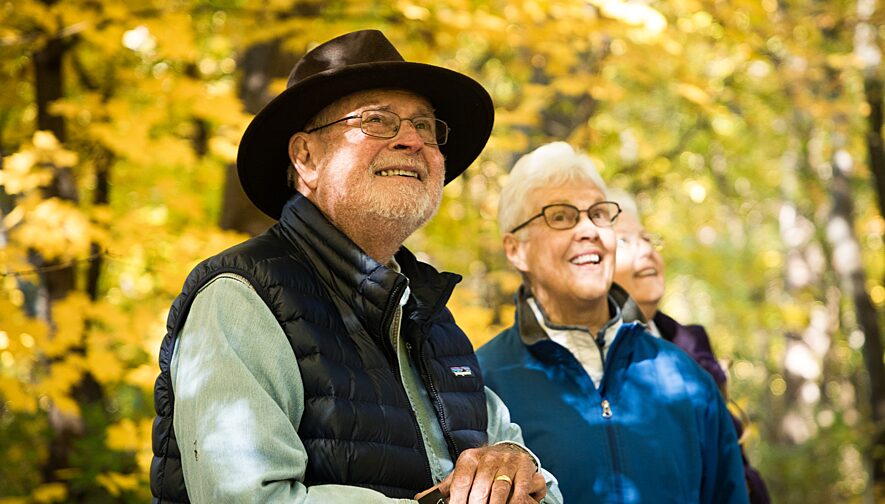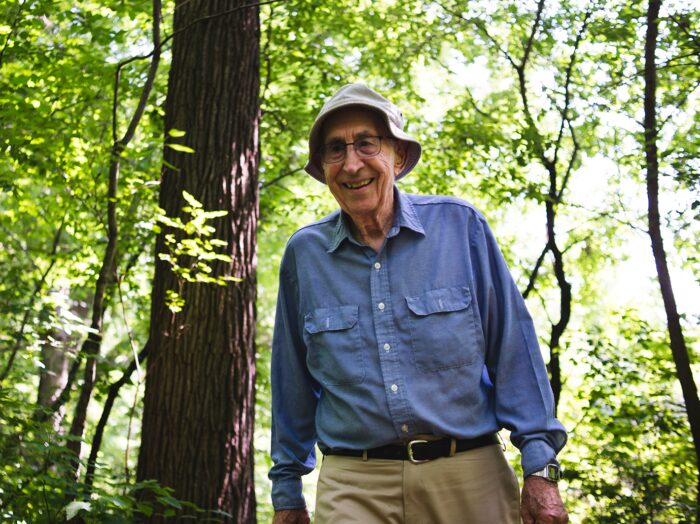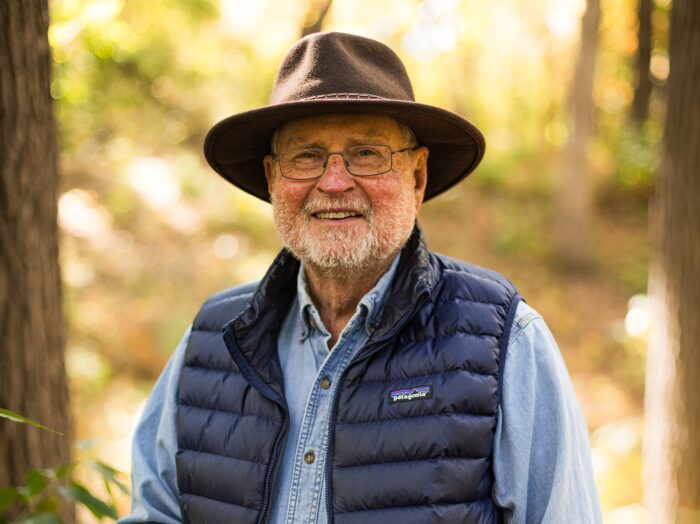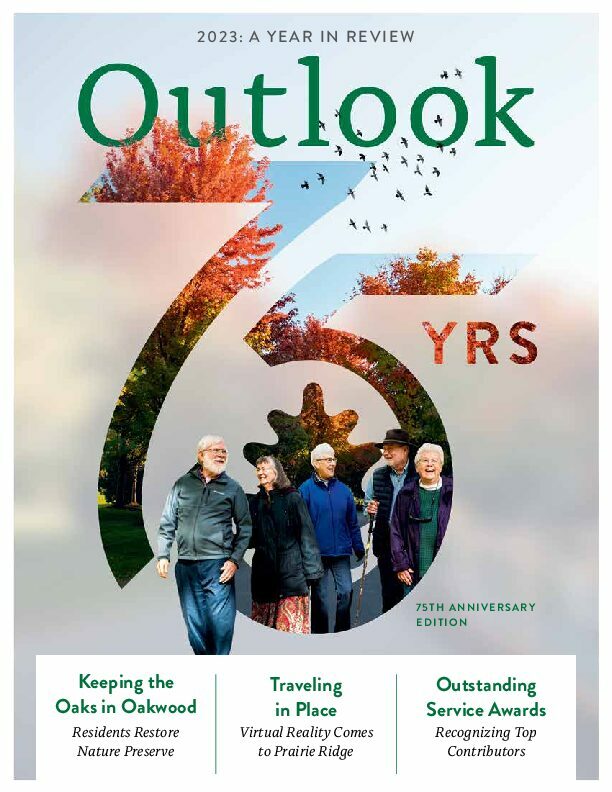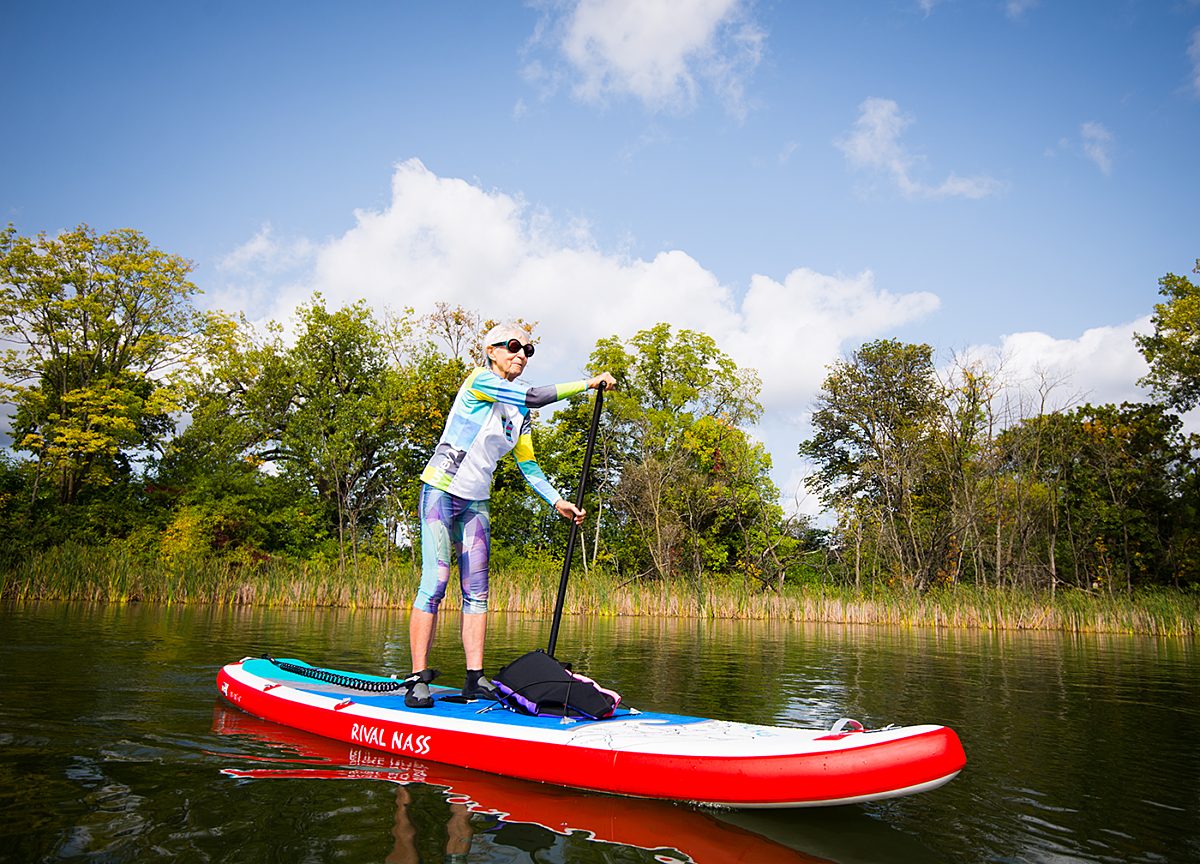Keeping the Oaks in Oakwood
Bob Greenler spends much of his time plotting the removal of Norway Maple trees.
It’s not quite what it sounds like. The University Woods resident has a love for all things in nature. But when it comes to the campus’s Nature Preserve that he cares for, the presence of this particular invasive species commands his attention. Norway Maples were introduced to the streets of Madison as shade trees about 20 years ago, and quickly found their way onto the Oakwood grounds, providing so much coverage in the Preserve that no understory shrubs or ground plants could survive.
“It was clear that if we did not intervene, it would slowly take over our Preserve,” Bob explains. Sensitive to his fellow residents’ perception of cutting down trees, Bob made it clear what the efforts were all about: ‘Let’s keep the oaks in Oakwood.’
“We had already heard complaints when we first talked about taking down the Norway Maples,” Bob recalls. “‘If this is a Nature Preserve, why don't we let nature take its course rather than cutting down perfectly good trees?’ Using the slogan helped us explain what we were trying to accomplish.”
Bob and others planted oak saplings that then flourished after part of the obstructive Norway Maple canopy was removed. It’s because of this effort and many more that Bob is known as the ‘grandfather’ of the preserve.
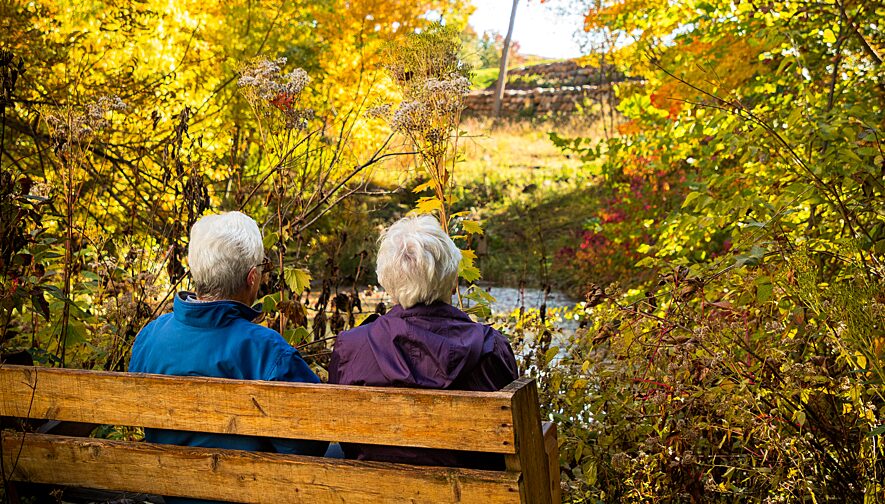
The group of stewards is now known as the Nature Preserve Committee. It’s a serious venture conducted by members with expert experience. They include Bob, renowned nature photographer Glenn Chambliss, and former UW-Madison soil scientist Marv Beatty. The Committee makes thoughtful and strategic decisions to keep the Preserve healthy—not just for the sake of the land itself, but also for the residents who find peace from a little forest bathing.
Committee member Glenn Chambliss knows just how thorny the issue of invasive species eradication can be. It’s a never-ending battle against plants like honeysuckle, garlic mustard, common buckthorn, and many others. Virginia stick seed, while not technically an invasive species, is very aggressive in its bid to populate the preserve.
“When you touch them with your clothing, they stick to you and get transported,” Glenn explains. “They stick to wild animals, such as deer or squirrels or whatever. And then they fall off and the seeds have spread.”
It’s not just about removing the invasive species, but also re-planting native ones. According to Bob Greenler, the Nature Preserve was once an oak savannah, ripe with prairie plants and groups of oak trees. European settlers halted the many land management practices of Indigenous Americans that kept prairies intact, which led to the emergence of more invasive species that changed the landscape. Since 2003, the Nature Preserve Committee has been returning the land to its roots, including planting a handful of oak saplings each year. After several years of this practice, Bob had already noticed the payoff, and recorded as much in his journal in 2018.
"I realize the time has come when it is no longer necessary to envision a future prairie,” Bob writes. "Though it will improve with each passing year, this prairie is a glorious scene, right here, right now!”
It doesn’t take a green thumb to appreciate the beauty of the Nature Preserve. Oakwood residents venture along its walking paths and rest on its benches yearround, taking in what Bob calls “an ecological gem.” The Preserve offers a kind of serendipity not found elsewhere on campus. As a photographer, Glenn Chambliss has his lens attuned to all kinds of wonder.
“In 2021, I just happened to discover this bumblebee: the only bumblebee that's on the U.S. Endangered Species List,” Glenn recalls. “And to have it in our Nature Preserve I felt was wonderful. There it was! And I was just so excited.”
Even in the less novel moments, the Preserve offers a reprieve that’s just steps away from living spaces—a unique attraction for those considering joining the Oakwood community.
“Residents take pride and ownership over the Preserve,” Monique Banas, Corporate Marketing Manager, says. “For some, it’s a large part of the decision, if not the reason, they decide to come here.”
The Nature Preserve Committee’s strategic plan serves as yet another example of residents’ commitment to the common good. When people put community first, they create a canopy under which everyone can thrive.
Vision of the Nature Preserve Committee
To restore the ecosystem that existed here before European settlement resulted in suppression of periodic wildfires and the introduction of invasive plants and animals. We will do this by continuing the past practices of nudging the plant and animal communities it contains toward an ecosystem of open oak-hickory woodland similar to the one early European settlers encountered upon their arrival.
